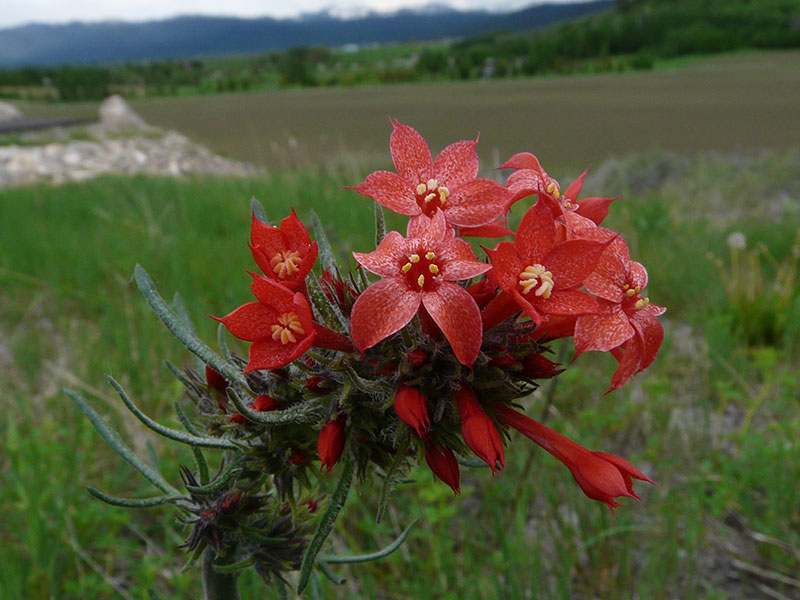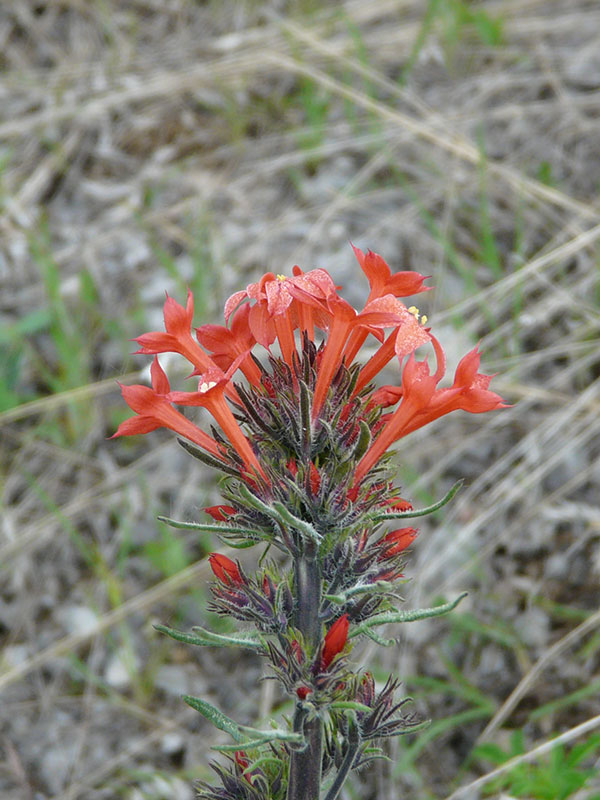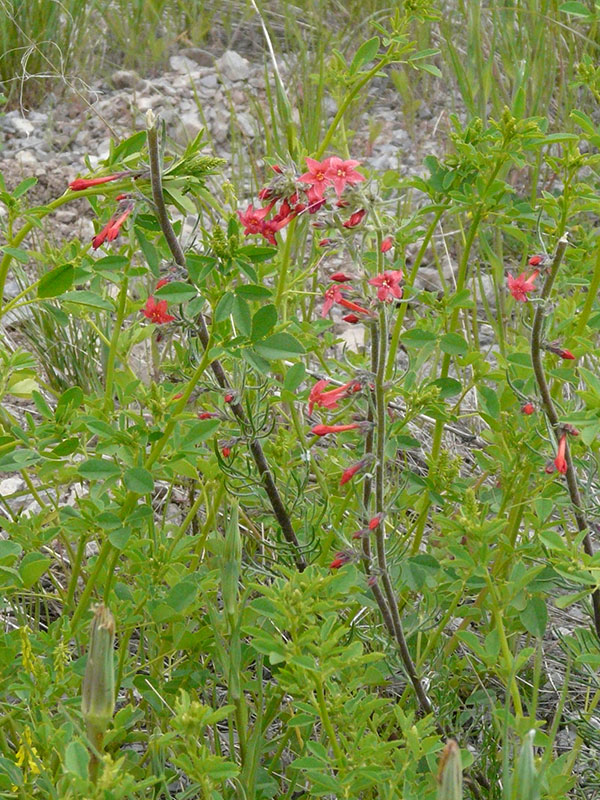Ipomopsis aggregata / scarlet gilia
- bright red (usually), elongated, trumpet-like flowers; 5 petals
- late season (July, August) flowers may be white
- highly divided, comb-like leaves
- pollination by hummingbirds (red forms) and moths (white, late forms)
- smells bad but tastes good
Synonyms: Gilia aggregata
Also known as: skyrocket, scarlet trumpet
Ipomopsis is from the Greek, meaning striking appearance, and that certainly fits. And that could well be the reason that this, too, has been named as a US Forest Service Plant of the Week. But in addition to being striking, the plant shows a high degree of variability throughout its range. The upshot of this is that plant namers have put it in 8 different genera before (hopefully) settling down on this one.
Scarlet gilia flowers are bright red (at least usually) and elongated like trumpets. Although it blooms early in the season, plants do flower later, meaning July or August. In that case the petals may be white. As might be expected from the flower shape, pollination is by hummingbirds or moths. Moths are especially drawn to the white flowers.
At this point it should be noted that there is another species of Ipomopsis in the Valley, i.e. Ipomopsis tenuituba, or slender-tube skyrocket. It’s petals are light pink with much darker pink spots, although, or course, it too is highly variable. That means the petals may be completely white (longer and pointed)
Scarlet gilia leaves are highly divided and comb-like. In their first year, before blooming, they form a small mound. So far, since I have not knowingly seen the slender-tube species, there doesn’t seem to be a lot of difference between them.
If you wanted to collect seeds of scarlet gilia, you might find it tricky. Basically, it is a short-lived plant (once it flowers), and often dies soon after flowering, so the seed collection opportunities are limited in time. On the other hand, before flowering, it may persist as a rosette for several years.
One of the more interesting biological phenomena associated with this plant is that of “compensatory reproductive growth”. Indeed, this was discovered by studying scarlet gilia and has only since been found to occur in a number of other species. Unlike, say, larkspur, Ipomopsis isn’t toxic and doesn’t really mind being eaten by wildlife or livestock. But once cropped off – and in response to substances in the eater’s saliva – the plant sends up new flowering shoots and branches. In fact, the eventual reproductive output after grazing may be higher than that in ungrazed plants.1.
Also remarkable is that the flowers are unisexual, with females outnumbering males by 3:1. There is just no end to the weird things you can learn by studying plants. And like honeysuckle vine flowers that you might have known as a kid, if you break off the basal end and pull the stigma through, the drop of nectar on the end tastes nice and sweet.
1Paige, K.N, and T.G. Whitham. 1987. Overcompensation in response to mammalian herbivory: the advantages of being eaten. American Naturalist. 129: 407-416
| Color | |
|---|---|
| Family | |
| Blossom size | |
| Inflorescence size | |
| Inflorescence type | |
| When? | |
| Where? |




